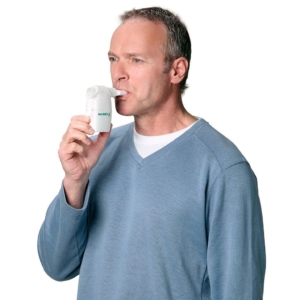Thursday, May 23, 2024
The Speech in Speech Therapy
Starting June 14 - try to see this film. If it's true to the first film, it is so true to the established theories of brain and mind! So true to emotions, and how they confound, enhance, cloud, distill and empower your thinking! Check it out.
Hello again! It’s the fourth installment of “National Speech – Language – Hearing Month, 2024”. If you’ve missed any of the previous posts, you can look back in the blog to catch up. The topic for this post is a fundamental one to the profession: disorders of speech, voice and breathing. They put the speech in speech therapy! These are the sub-specialties of the field, where I feel justified in wearing workout clothes and the latest "kicks" to a therapy session. This is our subspecialty, where we "speechies" feel we can run with the big therapist girls and boys!
Since evaluation and treatment of speech, voice and breathing disorders involves significant physical training, let’s first thank all our colleagues in associated medical and rehabilitative fields whose work contributes to patients’ improvements and healing. Physical therapists, occupational therapists, physical trainers, bodyworkers, massage therapists and other professionals help the patient move more purposefully, with more strength, faster and more accurately to meet their daily needs – including communicating and swallowing. Among speech – language pathologists surveyed for the 2023 ASHA survey, 12 to 61% reported that persons with these disorders were among the top five diagnoses in their caseloads. Impairments of speech and voice are among those for which medical consultation is highly recommended, so the speech - language pathologist earns "street cred" with evidence - based, individualized services provided these patients.
What would be some desired outcomes of treating these disorders? People whose speech is not easily understood might want to be more intelligible – that is, understood by most people they meet. Persons in treatment would also want a speaking rate that allows their listeners to understand the message. In addition, speakers want their message to sound natural, or like the speech of their listeners. Measuring how close a person is to achieving their outcomes, the speech – language pathologist measures the person’s speech loudness and its quality (Rough? Breathy? Strained? Weak?). How well the person coordinates breathing with the upstream components of speech – phonation, resonance and articulation – is often critical to design a care plan in these domains.
Tools commonly used with these patients to improve their speech, voice and breathing can run the gamut, from decibel meters that can give you real time loudness measurement; to breathing trainers, varying in degree from a straw in a glass of water for bubble blowing, to Aerobika, Acapella and Aspire EMST; to tracheostomy and ventilator assistive technology, that facilitate speech and swallow for persons w/ significant medical challenges; and to vocal amplifiers for persons with chronic limits in their respiratory power. The emphasis with these patients on quantitative scaling of behavior, e.g., vocal loudness in decibels, duration in seconds of sustaining a vocal tone, or the number of coughs that are heard within one minute - they all demand a special precision and focus by both the clinician, and the person served by that clinician.
If you want to understand what speech - language pathologists are talking about in their speech/voice/cough work, you need some familiarity with the terms they use in their own communication. For example, When good vocal hygiene is in play, you'll be more easily heard today. You'll hydrate, moderate, breathe just right, so all your words are outa sight! Or, a tracheoesophageal fistula = an unnatural connection between the trachea and the esophagus, allowing trapped inhaled air to be driven into the esophagus to produce speech. "TEP", "PMV", and "GRBAS" roll off the professional's tongue, but we're actually trying to communicate when we throw around these words. Let's make sure we connect with the people through use of meaningful words.
When There Is No SLP: Offer your patient a water break periodically during your session, if the patient's diet allows that. When your patients want to talk with you, or with family or caregivers present, help them maintain the best functional position for speaking - head and trunk elevated to at least 60 degrees. Maintain good eye contact with the patient, during the entirety of that conversation. If the patient can sustain enough attention, model the pronunciation of any words they might want to use.
On this Date in History: Little Debbie Sproul of Western Springs, Illinois, saw her first brood of emergent cicadas at a tree in her neighborhood, back in the summer of 2007. The 8 - year - old sprite loved the outdoors, but did not recognize the little wriggly newcomers to her world. Crawling really close, daunting Debbie got so close to the pile that SHE INHALED A CICADA LARVA! Debbie's Mother commented to the newspapers, "She ran in crying, and when she tried to explain what happened - she just wheezed and crackled from her mouth!". Eventually, first aid was provided and Debbie got her voice back.
Who Does the Speaking in Your Neighborhood?
Friday, May 24: Billy Strings, Americana music; Allstate Arena, Rosemont, IL
Friday, May 31: Tim McGraw, country music; Allstate Arena, Rosemont
Tuesday, May 28: Astrophysics Seminar - "Binary Accretion"; Paul Duffell, Northwestern University, Evanston, IL
A Note: Chronic cough treatment is a thing! With patients who have frequent coughing for more than eight weeks, and who might have a rough voice from the coughing episodes, speech - language pathology treatment can sometimes reduce or eliminate the behavior. Speech - language pathologists work in coordination with medical and allied health colleagues, to solve what are often complex cases.
Something You Can Use: The Voice Handicap Index - 10 Item scale is a brief self - assessment of a patient's voice, along functional, physical and emotional dimensions. Collecting VHI - 10 data may help you determine if a patient may be motivated to have a voice evaluation. Find the VHI - 10 scale at https://beverlyhillsvoice.com
Subscribe to:
Post Comments (Atom)





No comments:
Post a Comment